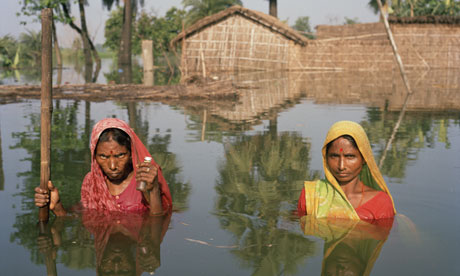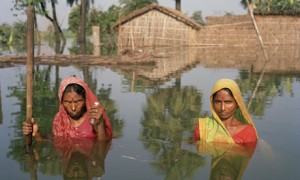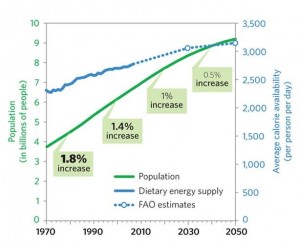July 3, 2014 – In 2050 our human population will exceed 9 billion. That’s almost 2 billion more than those living today. And that means 2 billion more mouths to feed. At the same time we will see climate change in action in many areas where the greatest population growth occurs. The combination means trouble.
So what are we doing about it? It is in developing countries that our population is growing the fast est. Which countries make the top ten?
- India – expected to surpass China in population by 2025 and to reach 1.7 billion by 2050.
- Nigeria – the seventh largest country by population today, it is expected to reach 433 million by 2050.
- Pakistan – the sixth largest country by population today, it is expected to grow to 314 million by 2050.
- United States – the only developed country to make the top ten list, it will grow to 422 million by 2050.
- Tanzania – currently with 46.2 million and expected to triple in population to 138 million by 2050.
- Ethiopia – is the 15th most populous country today but will be 9th in 2050 at 174 million.
- Democratic Republic of Congo – the 21st country in the world by population it will grow from 67.8 million to 149 million by 2050.
- Bangladesh – today at 151 million, the country is expected to increase by more than 50% to reach 226 million in 2050.
- Indonesia – the fourth largest country by population today at 238 million, it will grow to about 310 million in 2050.
- Uganda – today at 35 million, the country is expected to triple in population to 106 million by 2050.
With five of the top ten in Sub-Saharan Africa, already an area of the planet suffering from food shortages, extreme poverty and endemic diseases, what will climate change do to further challenge these societies? If Africa continues to rely on its current staples for nutrition the climate models do not foreshadow food abundance in 2050. Without climate change there is an outside chance that they can increase yields through irrigation and mechanization sufficient enough to feed the anticipate growth in population with higher caloric intake per person than today. But with climate change food availability is expected to decline by 500 calories per person with average rice yields falling 14%, average wheat 22%, and average corn (maize) 5%. Atmospheric temperature rises approaching 2 Celsius (3.6 Fahrenheit) degrees, although less than that anticipated in polar regions, will remain significant enough to impact precipitation patterns and evapo-transpiration rates. This means the plants that do grow will need more water. But freshwater resources will not grow. Today freshwater is a challenge for rural populations in Africa. But in 2050 freshwater will be in crisis mode.
Three of the top ten list above are countries of the Asian subcontinent where mean average temperatures today are already among the hottest on the planet. The United Nations, in trying to get consensus among the nations of the world to keep CO2 levels in the atmosphere below 450 parts per million by mid-century, anticipates this will mean an average mean temperature increase of 2 Celsius (3.6 Fahrenheit) degrees. What this will do to India, Bangladesh and Pakistan is severely stress what is already a highly stretched agricultural sector.
These are countries that rely on the annual monsoon to provide water for several cycles of crop growth throughout the year. But they are also areas so heavily farmed that the soils are severely depleted. Farm sizes are small and largely subsistence in nature so there is little in the way of reliable food surpluses to provide for urban population centers. For these nations food imports and food aid are a must today.
What will it be like in 2050 when rice and wheat yields are expected to suffer from similar declines as in Africa and for the same reasons? Add to this the consequence of climate-change induced sea level rise with salt water contamination of coastal agricultural land as well as overall arable land loss. Up to 13 million in Bangladesh alone will be displaced with 16% of the nation’s rice production lands lost.
What is the best mitigation strategy for these eight countries?
It involves significant investments in water and energy infrastructure to create better efficiencies and higher farm yields.
It means converting current irrigation methods to state-of-the-art drip technology.
It means grey water recycling and freshwater conservation on a massive scale.
And in terms of crops it means development of heat tolerant strains of current staples as well as the introduction of new food alternatives more capable of adapting to a warmer, drier climate.
This will be true everywhere on the planet. But for countries still experiencing the impact of a population growth bubble, such as those mentioned in this posting, action is needed now to mitigate against the potential of famine in their future. Note the intersecting lines in the graph below. At some point our ability as a species to meet the calorie requirements of all of humanity will be compromised. If we cannot feed the populations of these countries the world will see massive migration brought on by climate change. Or worse, we will witness nations fighting each other over declining food, water and arable land resources.























